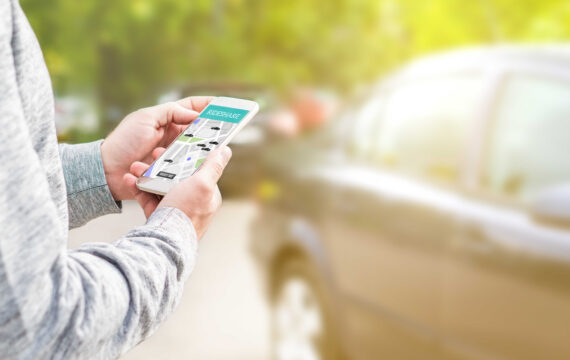The world was caught off guard by the challenges of social isolation and the massive shift online brought about by the pandemic. For many companies, especially those operating offline, this sudden change meant a complete rethinking of their business strategy to keep pace with a crowded and ultra-competitive market. Businesses not only had to move online to navigate the new normal but also needed to find their unique voice to cut through the noise of growing competition.
With its strong focus on customer needs and value drivers, AI-powered personalization has provided a new edge for brands in this challenging business environment. Almost before we knew it, we stepped into a new age where an insights-driven approach is becoming a must for any business to be more flexible, nimble, and receptive to change. Read on to find out how personalization at scale can help companies win their personalization game and guide them on their journey to growth success.
It’s official: The era of personalization is here
Within the past two years, we’ve seen fundamental changes in how we interact with brands and do business. Social distancing and avoiding touching surfaces have affected our lifestyles and buying habits, causing us to literally live online and leave a vast digital footprint. By capturing and putting this digital footprint to work using a personalization engine, companies can act on their customers’ key triggers and offer highly tailored digital experiences that are likely to appeal to their target audiences. Businesses should be mindful, however, of security and data storage concerns and proactively manage data privacy, which lies at the heart of trust between customers and brands.

Source: ScienceDirect – A Digital Twin Reference for Mass Personalization in Industry 4.0
With vast troves of data at our disposal, we’re now officially in the era of AI-driven personalization, and it’s changing the way buyers engage with brands. A one-size-fits-all marketing approach no longer meets customers’ needs and expectations. Generic pitches, untargeted content, impersonal buying experiences, and ill-timed offers can only backfire against your brand. By contrast, think about your favorite consumer company. Are you impressed by their personalized greetings, bespoke offers, and customized calls to action? They make you feel valued and satisfied at every stage of your buying journey.
Prioritizing personalization in technology and marketing has never been more urgent and business-critical. Today’s customers expect to be approached at the right time with relevant products and services, even if it means sharing their personal information or paying extra. Once they see genuine value, get an offer that resonates with their needs and makes their lives easier, and feel you care about their preferences and buying experiences, they’ll stick with you.
While in the B2C world, personalized treatment and easy-to-navigate customer experiences are at the center of any business strategy, the B2B market still falls miles behind when it comes to AI-powered personalization.
Taking personalization to the next level: Personalization at scale
Personalization focuses on knowing the needs of each individual customer so we can cater to those needs. With the help of automated algorithm-driven processes, all communications, experiences, and appeals are tailored to customers’ specific tasks, habits, or preferences based on what a company knows about an individual.
Collecting customers’ personal information goes far beyond knowing their age, gender, or job title. Granular behavioral data points — like the coffee a customer prefers, the shoes they’ve browsed, or the service center they take their car to — can provide clues into a customer’s behaviors, choices, and buying patterns. This data helps businesses send a timely reminder or a relevant recommendation and ultimately build customer loyalty and prevent churn.
While personalization is all about individualized experiences and services for a specific customer, personalization at scale is a business approach aimed at accommodating groups of people. Powered by data and AI, it involves a robust and mature personalization strategy across all channels, touchpoints, and layers of the customer experience, covering the company’s full product range.
Embedding AI-driven personalization into the DNA of the entire organization may seem like a mammoth undertaking, but it pays off with tangible benefits. For one, according to Deloitte, one in five consumers don’t mind paying 20% more for personalized services. McKinsey finds that scaled personalization can generate as much as $1.7 trillion to $3 trillion in new value, though capturing this value calls for incorporating the right technology and properly applying it to business challenges.
Trailblazers of personalization at scale
Personalization pioneers have long been using intelligent customer-facing personalization engines that have changed the user experience for millions. Consider Netflix, the world’s most popular video streaming platform, with their innovative, self-improving AI-based algorithms for content matching and recommendations. Netflix uses technology to create a digital picture of each subscriber to cater to their media tastes, actor preferences, and more.
Amazon is another company that bases its website personalization in technology for a convenient browsing experience and recommendations based on a customer’s specific interests. Amazon’s personalization technology ensures that each offer is relevant and perfectly timed. Then there’s Grammarly, with their intuitive grammar checking tools that track a user’s writing progress and suggest personalized corrections and tips to improve each text.
However, not only world-renowned trailblazers can afford AI-powered personalization. It has already become accessible for many businesses. Built on a combination of artificial intelligence and machine learning, big data, cloud computing, and IoT, personalization technology is having a significant impact on both businesses and consumers worldwide.
Building blocks of personalization at scale
If scaled personalization is the practice of building personalized experiences for specific customer groups, segmentation is the process of splitting your audience into these groups for focused and efficient targeting.
B2B companies don’t have it easy when it comes to targeting individual customers. However, identifying similarities and differences within your audiences allows for the effective targeting of specific groups, industries, regions, and demographics. Each of these audience segments will have different needs, purchasing preferences, buying powers, and ways to engage with your brand. A good segmentation strategy is an essential step to understanding the customer journeys for each segment, providing bespoke online experiences, and delivering maximum value for customers.
For B2B organizations that offer multiple products or services to several industries or smaller market segments, automatic and dynamic website personalization powered by a digital personalization engine provides a scalable approach to building highly tailored and meaningful digital communications with customers. Relevant, segment-specific website content and fine-tuned marketing messages help companies create compelling customized experiences, advance customer relationships, and micro-target key decision-makers across diverse business sectors.
Source: Acquire – Personalize vs Customize: How Are They Different?
Doing personalization right
While innovations in technology and data analytics allow businesses to bring a more human touch to customer experiences, many organizations are still struggling to put their personalization strategy on the right track. The effort is well worth it, though. A McKinsey survey finds that personalization-driven companies have seen a 5 to 15 percent uplift in revenue and have improved their marketing spend efficiency by 10 to 30 percent.
Embracing three major transformations will make your personalization more personal and poise your business for success.
- Digitizing the brick-and-mortar experience
With personalization in place, brands can offer offline buyer journeys that will no longer be confined to physical spaces and interactions and will be augmented by personalized virtual experiences and offerings enabled by technology. Frontline staff will rely on AI-powered personalization tools and advanced analytics when offering products or services and making recommendations to customers. Meanwhile, buyers will enjoy their shopping experiences in a virtual environment, such as trying on a new makeup look offered by a virtual stylist at the AR beauty station.
- Scaling empathy and trust
Understanding people’s feelings and being able to connect with people is what builds trust and creates a bond between a customer and a brand. Machine learning algorithms for facial and emotional recognition are getting better and better at reading people’s emotions, moods, and health. This will allow for more personalized care so customers feel support and attention. Getting an offer for a nasal spray delivered straight to your home when you have a runny nose or a good comedy when you need to decompress might be just what you need after a tough day.
- Building partner ecosystems
The customer journey starts long before the buyer actually makes a purchase and continues even after the customer buys the product. For example, a shopping center, a retail store, a product itself, and customer service support each play their part in the buying experience. Creating a consumer ecosystem where all these touchpoints work together will enable brands to provide personalized and seamless buyer journeys.
As we have seen in one of our recent projects, the benefits AI-driven personalization brings to customers translate into benefits for the company. Besides, building your business on personalization doesn’t require investing huge money or switching to totally different technologies. Start by developing an implementation roadmap and move step by step. Measuring the value delivered through personalization against invested resources will provide insights into tangible results the business is getting as well as further steps to take towards personalization at scale.
Personalization challenges turned opportunities
Scaled personalization relies on collecting and activating all available customer data, which companies had relative freedom to do until recently. However, with the EU’s General Data Protection Regulation (GDPR), what counts as consent to data use has become more complex and uncompromising. Many see the GDPR as a curb on personal data processing and a hurdle to creating seamless personalized experiences for prospects whose interactions with a brand are constantly interrupted by recurring consent messages and pop-ups.
Industry insiders, however, see it the other way round. They believe that a strong emphasis on data privacy protection can make personalization anti-fragile, allowing it to thrive and be powerful no matter the restrictions. By no means do the GDPR and other privacy regulations forbid data collection and use. Rather, they ensure that personal information is obtained legitimately and is only used with its owner’s consent.
A survey by Deloitte reveals that as many as 79 percent of people are ready to share their data if they see obvious value in doing so. People also need to know their data privacy is taken seriously. For companies at the cutting edge of personalization in technology and marketing, this means reassuring customers that their data will be kept safe and used transparently and for their own benefit.
Another surprising advantage of the GDPR is that it makes consumer data much more valuable. Even though users can opt out of sharing their data, those who remain become more trackable and so are of higher value to companies. Accurate customer data can result in more targeted, streamlined, and efficient personalization at scale.
The future is today
Scaled personalization doesn’t happen overnight, but it’s becoming more pervasive and will become a core driver of growth success. Businesses need to act today to develop personalization capabilities and build real value for their customers and brands.
Here’s a quick reality check. Ask yourself:
- Does your website speak the same language as visitors?
- Do you catch visitors’ attention with spot-on content and relevant messages?
- Do you offer your prospects what they really want or need?
- Do visitors get positive brand experiences and come back for more?
If you answer no to any of those questions, the time has come to bring personalization at scale to your company and reap its rewards, from engaging visitors with enjoyable experiences to securing brand loyalty and driving revenue growth.
Ready to reinforce your business with AI-powered personalization technology? Intellias is here to help. Get in touch with us to learn how we can support you in building a powerful personalization engine that helps your business succeed.


